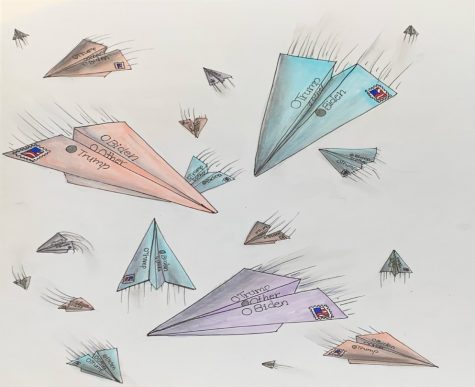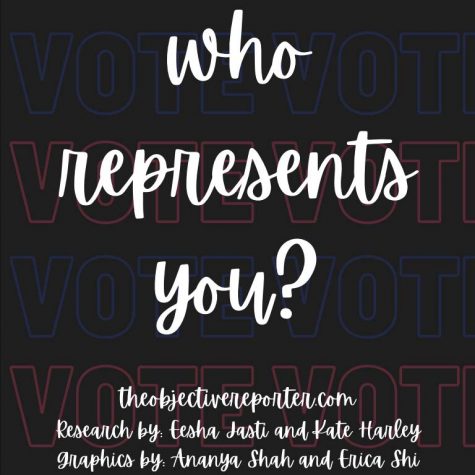The Pink House
March 3, 2019
Mr. Abbott recently announced plans to tear down the Pink House on Clayton Road to build a new parking lot in assembly in late January. The Pink House on Clayton Road has been a part of the Burroughs campus for decades, with its roaming chickens (owned by long-term tenant Mrs. Sudekum) beloved by all. The World sat with Mr. Abbott to discuss demolition details.
“There are lots of times, particularly with afternoon events, where the Clayton road lot can’t hold all the cars for events so…people end up having to park across the street in the Price lot,” Mr. Abbott said. “To solve this problem, the pink house will be converted into additional parking space.”
Mr. Abbott assured The World that such construction plans were only motivated by the immediate need for more parking space and had nothing to do with the increasing class sizes at JBS.
Abbott said, “We have a cap. We went from a cap of 600 to a cap of 650. And there are no plans to increase beyond that.” However, he admitted, “That’s not to say it will never happen in the history of the school.”
As for the history of the house, it was originally owned by Stephen Brauer (brother of the alumnus who funded the Brauer building). Burroughs has then owned the house for the last 12 years and rented the property to JBS families, according to Abbott.
“For it to be rented out again, we’d have to do significant renovations to the house which would cost a great deal of money.”
Discussing the amenities that came with Brauer’s estate, Abbott continued. “When I came, we didn’t have the Clayton entrance, and we [had just] bought…the Brauer house, which had a tennis court and a huge swimming pool. Originally, we just took down [the estate] to build the field hockey field.”
Now that the Potpourri sort room and Aim High offices have moved into the basement of the main building, there are no school functions in the pink house, leaving no pressing reason to leave the building up.
The demolition of the pink house also allows for other measures to be taken, like expanding the field hockey field to meet lacrosse size regulations. When the field was built, the boys lacrosse program didn’t exist. Mr. Abbott explained how once the pink house lot becomes permanent, further measures can be taken to expand the field: “At some point, the field will be lengthened and widened so that it can be a multi-use field.” Once the pink house is torn down and graveled, it will be turned into a permanent lot.
As for other construction projects, Lawrence Group has a book full of designs for the future. There are plans include squash courts and a new swimming pool.
When asked to elaborate, Mr. Abbott explained said that since we have 40 students who are playing squash and they go to…other schools like MAC, MICDS, or the racquet club in order to play, some fundraising has begun to build squash courts.” WHERE DOES QUOTE BEGIN?
The ultimate plan is to build a new swimming pool in the grassy area by Laughing Lake, put the squash courts in the old natatorium, widen and lengthen the field hockey field and wrap the Clayton lot around the field. Mr. Abbott said, “There would be a westbound exit [near the pink house lot] out of the Clayton lot to reduce the traffic in the mornings because you could go out that way and not get caught behind those turning left.”
Mr. Abbott emphasized that everything Burroughs has built has been LEED certified and “done with environmentalism in mind.” We just had a sale at the house last week so that everything in the house (the tiles, windows, fixtures, piping, everything) will be reused elsewhere before they demolish it.”
The new construction would be designed by Lawrence Group and built by PARIC, the same firms that have built the commons, Haerter Hall, and the library. Both groups have taken on large projects in the St. Louis Area; Lawrence Group has designed campuses for Saint Louis University (SLU), University of Texas at Austin, SSM Healthcare, and Columbia Broadcasting System (CBS). PARIC is undertaking projects to build One Cardinal Way and the Union Station Train Park.
In the long-term, construction of the entire project will begin once funding is secured. Mr. Abbott outlined the budget: “To do the demolition is very modest and putting gravel down is almost covered by what we sell off from inside the building. We had to pay taxes on the building when we were renting it out, so what it would cost to do that is almost even to do the temporary lot. To widen and lengthen the field, build the parking lot, and resurface the field like put new turf down, would be in the $2-$3 million-dollar range.”
Mr. Abbott further explained that the money doesn’t come from the school’s operating costs. Rather, “All of that comes from gifts to the school. That doesn’t come out of tuition. It comes from capital gifts from the school.” When asked how the allocation of gifts was decided––who decides that gifts fund a parking lot as opposed to a scholarship, for example–– Mr. Abbott said, “The donor decides. We solicit gift for the endowment, for tuition aid, and we solicit gifts for capital projects. We solicit for both. There is always ongoing solicitation for tuition aid, and many new endowed scholarships have come into the school in the past year. It is always the option of the donor as to where they would like to allocate their gifts. We try to honor where those gifts are intended.”
“Every year we have annual giving, where we ask everyone to give a gift. And you, as a student, will receive a letter every year for the rest of your life asking for a gift for the school, ten dollars, $100, $1000, $5000, that goes into annual giving and that supports the operating budget of the school. Tuition pays for 78% of whole budget. And annual giving gives 11%, endowment pays for 10%.”
“The endowment is like $50 million dollars and we put the interest of that and put it in the operating budget. That runs the day to day operation of the school. It pays the teachers, all the salaries, and most of the tuition aid people receive. On top of that, if you beyond annual giving, there are capital projects. For the STAR building, we raised $30 million through capital gifts that people paid to build the building… it didn’t affect the operating budget of the school.
“The same would be true of this. At the same time, people can say, ‘I’m gonna give $500,000 to go into the endowment and I want the interest ($25,000) to pay for someone’s tuition. So when you make a big gift to the school, people don’t say here’s a million dollars; you can just have it. They say here’s a million, what would you use it for, and we would let them know, this is how it’s going to be spent, and this is how it’s going to benefit the students. And they say great and we write a contract with them that says this will go to x, y, z; they lay it out, and it goes as is desired.” Highlighted deeds cutting and quotes should be integrated into sentences.
The next five years will bring many changes to the Burroughs campus, perhaps at an expedient pace considering the fast approaching 2023 JBS Centennial.







